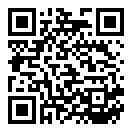Abstract:
Today, our children are in a boundless sphere of information and communication, and are subject to innumerable religious messages. This makes it necessary for us to take care of these young audiences. One of the issues with which it is necessary for practitioners in the realm of education to be familiar, is the children's perception of religious subjects and notions at different ages. Surely, the basis of children's religious thought can be found in these same notions and perceptions. If we seek to plan for a religious messaging appropriate for children, it is necessary for us to step into the children's world, looking at religious knowledge from their viewpoint. The stages of development and evolution of children's and the youth's religious perception are divided into three periods of intuitive religious thinking, objective religious thinking, and abstract religious thinking.
Accordingly, we may plan children's religious education for two general age periods: 5-9 years old, and 9-13 years old. The children's religious education must be properly mixed with games, humor, entertainment and story-elling, so that there is an effective and attractive relationship between the child and the educator. In the second period, using poetry, songs, plays, and scientific or artistic activities, as well as various entertainments, are among the necessary tools for education.




